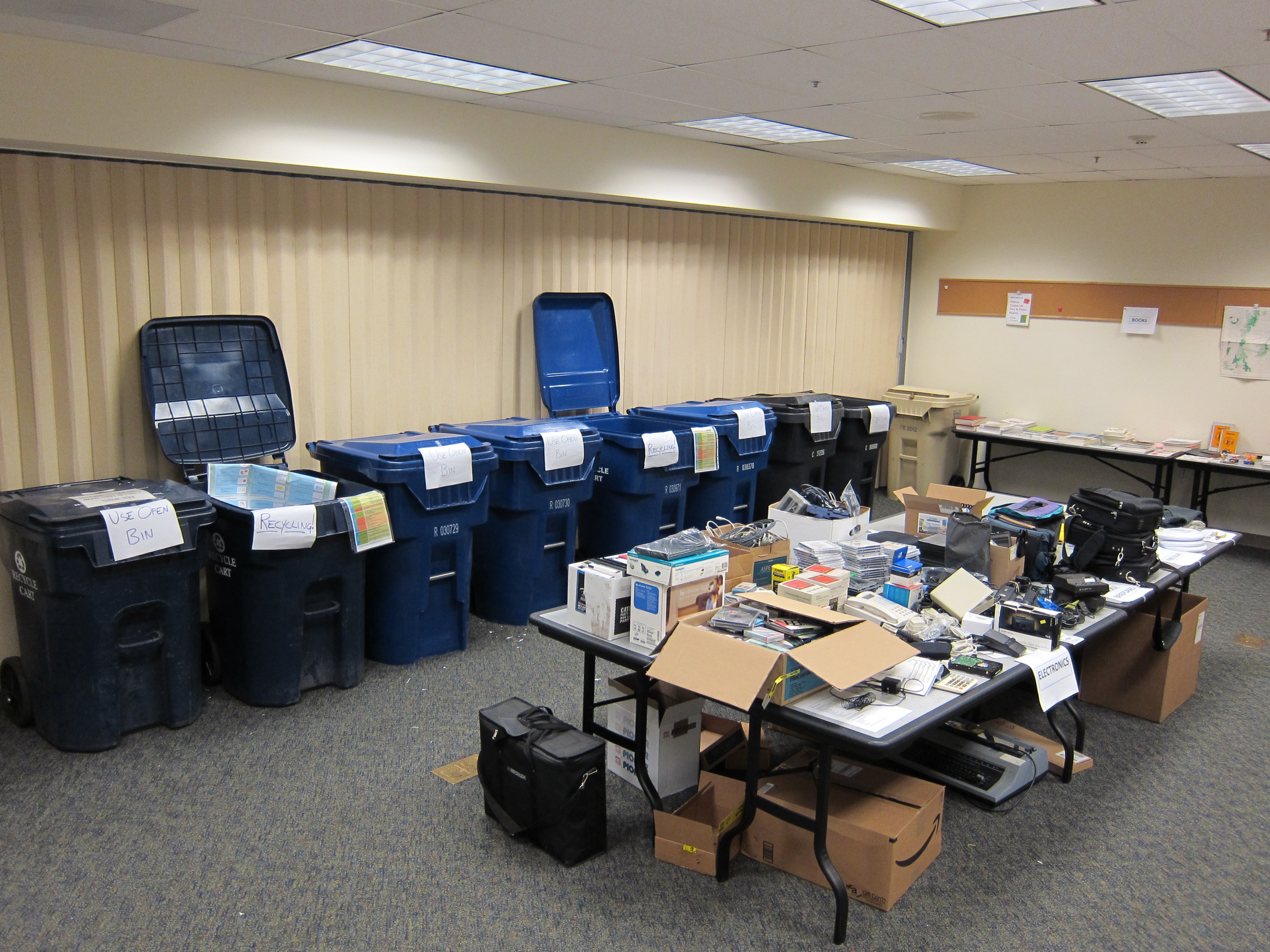By Jennifer Letz

Spring has finally sprung, and with the return of warm breezes and showy tulips, so returns our primal urge to purge everything that has accumulated in our workspaces since we set the clocks back. Even in an age of electronic everything, our propensity to collect and stash material objects is only rivaled by the wiliest of desert pack rats. Whether you have a light spring cleaning in mind or a large-scale office move on the calendar, every work environment will need to embrace a downsizing event at some point.
So how do you get all of this “stuff” to leave your workplace? And, more importantly, how can it be done successfully without adding more trash to our environment? A few years ago, I was faced with these same questions when I was assigned to my employer’s Move Team, a group of employees designated to orchestrate an office move of over 100 employees to a nicer – but smaller – building. Management made it crystal clear that storage was at a premium in the new facility and employees must downsize or risk working in a cubicle resembling a packed storage unit.
Organizing a purging event
As the organization’s sustainability specialist, I perceived this call to “reduce” as a perfect opportunity to incorporate its partners in crime: “reuse” and “recycle.” To make this downsizing effort a success, a highly organized purging event was required.
The first step was to set official purging dates so employees knew to block out time for cleaning out their workspaces. Next up was contacting local waste haulers to order extra roll carts and a 20-yard dumpster exclusively for paper and cardboard. I reserved a conference room for the entire event so it could serve as the base camp for collecting and sorting. In this room, I began designating tables and floor space for every kind of item one could find in an office (spoiler alert: it’s way more than you can imagine). And a team of volunteers – mostly members of our office Green Team – signed up to staff the recycling room for a few hours at a time each day.
The final act was the most crucial. Recognizing that my co-workers may be very skilled in their respective fields, but weren’t waste management experts, I by-passed attempting to coach them about recycling specifics. Instead, I simply removed all the trash and recycling cans from the building the day before the purge was to begin. Every unwanted item would have to come through our recycling room and be sorted by myself or a volunteer. Drastic? Maybe. Effective? Definitely!

The day of the purge
When we finally opened for business, we were greeted by our co-workers sporting dubious looks and armfuls of workspace detritus. Our volunteers took each visitor on a tour of the room and assisted them in sorting items. Once employees experienced the operation in action, they were quick to return with more items. Some would even go shopping, perusing the abandoned items and picking up a few pens or books. Others just marveled at how we could have accumulated so much stuff – a powerful reminder of the side effects of our material world.
Downtime was spent testing every pen and marker, wiping down binders, and adding new labels to file folders to cover up their former names. While it may seem a waste of time to tackle such menial tasks, this was actually the crucial step in the “reuse” phase of the purge. If these items were to compete with new items on the supply room shelves, they needed to be equally trustworthy and clean. It’s human nature to be attracted to shiny, so shining we did!
So what happened?
After many days of sorting and recycling we shut our doors and tallied the results. The numbers were astounding - 36 roll carts of recycling left the building accompanied by only two roll carts of trash. Ten boxes of electronics and media were delivered to specialty recyclers. Almost 400 binders were collected (half we kept, half donated to the local school district), and thousands of other office items (folders, binder clips, pencils, etc.) were organized and sent to the new supply room ready for the next project.
In total, over 90% of items brought into our pop-up recycling center were diverted from the landfill, which equated to a significant savings in avoided waste hauling costs and recovered office supplies. But more importantly, this hands-on event had a palpable impact on employees by changing their viewpoints on consumption and waste. Many committed to making more mindful decisions about their purchases in the future.
So whether you’re considering a spring cleaning day or orchestrating a major office move, thorough pre-planning, careful sorting, and a kung-fu grip on controlling all waste streams will ensure a successful clean and green event.
_____________________________________
Jennifer Letz is a sustainability consultant based in Bend, Oregon. She takes a whole systems approach to her work, specializing in energy efficiency, waste management, renewable energy, and alternative transportation. She can be reached at mail@jenniferletz.com.
(Return to the cover of the 2017 PM Digest: Greening your practice)